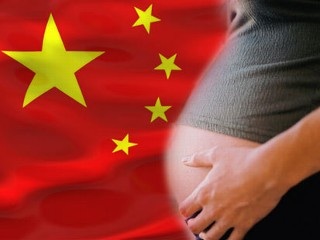Financial Times
By Simon Rabinovitch in Beijing
Chinese doctors have performed more than 330m abortions since the government implemented a controversial family planning policy 40 years ago, according to official data from the health ministry.
China’s one-child policy has been the subject of a heated debate about its economic consequences as the population ages. Forced abortions and sterilizations have also been criticized by human rights campaigners such as Chen Guangcheng, the blind legal activist who sought refuge at the US embassy in Beijing last year.
China first introduced measures to limit the size of the population in 1971, encouraging couples to have fewer children. The one-child rule, with exceptions for ethnic minorities and some rural families, was implemented at the end of the decade.
Since 1971, doctors have performed 336m abortions and 196m sterilizations, the data reveal. They have also inserted 403m intrauterine devices, a normal birth control procedure in the west but one that local officials often force on women in China.
The numbers do not directly equate to “missing” births because some couples who violate the one-child rule have also had abortions or been sterilized, while intrauterine devices can be removed.
The Chinese government has previously estimated that without restrictions, the country’s 1.3bn population would be 30 per cent larger.
In the US, where the population is 315m or about one-quarter the size of China’s, an estimated 50m abortions have been performed since the landmark Roe vs Wade Supreme Court decision legalised abortion in 1973.
The Chinese data also show that the number of medical procedures to prevent births has been steady since the late 1990s, despite repeated calls for a softening of the one-child rule. Every year Chinese doctors abort roughly 7m pregnancies, sterilize almost 2m men and women, and insert 7m intrauterine devices.
As China’s working-age population begins to decline, economists have warned that the family planning rules will pose an increasing drag on economic growth. China’s dependency ratio – which compares the potential workforce with the number of children and retirees – rose last year for the first time in 40 years.
“This makes China’s population look more like a developed country than a developing one, which is a key disadvantage in labor-intensive industries,” said Ken Peng, an economist with BNP Paribas who analyzed the health ministry data.
The birth restrictions have also led to a severe gender imbalance because of a traditional preference for male children and the selective abortion of female fetuses. There are now 34m more men than women in China.
During the annual session of the Chinese parliament, which concludes on Sunday, the government merged the commission that enforces the one-child policy with the health ministry. Some analysts believe the move could presage a more rapid shift away from strictly enforced birth controls.
“After the ministerial restructuring, the power of the family planning unit will be reduced,” said He Yafu, a Chinese demographer. “It won’t have the ability to design policies and it will have less say in the country’s population strategy.”
According to Mr He, one likely change to family planning rules would be to permit two children for parents who were both single children themselves. The policy, in place on a trial basis in some cities, could be implemented nationwide, he added.
Mr Peng, however, said that even a total abolition of the family planning rules at this point would not be enough to alter China’s demographic structure, and would simply delay the country’s ageing process by a few years.
The calls for relaxation are also meeting resistance.
After supervision of the one-child policy was given to the health ministry, the deputy head of the family planning unit rounded on critics of his department’s work. “The idea of easing the ageing problem by increasing the fertility rate is like drinking poison to quench thirst,” Yang Yuxue said.
Subscribe to:
Post Comments (Atom)



No comments:
Post a Comment